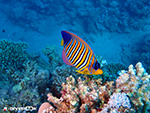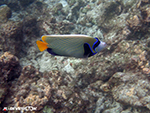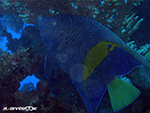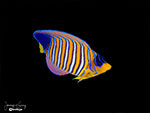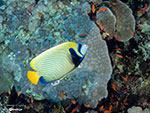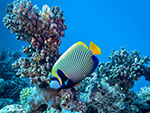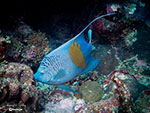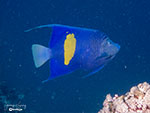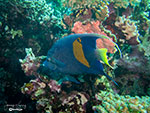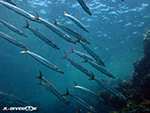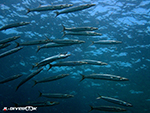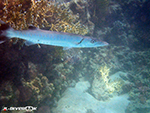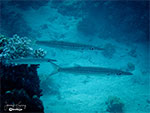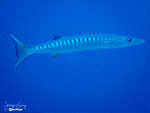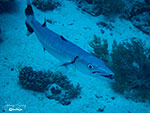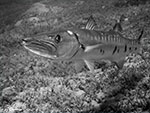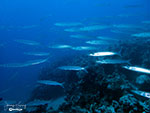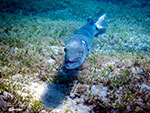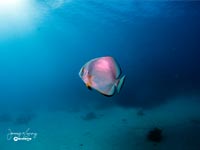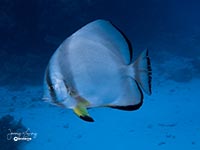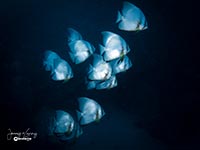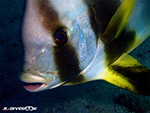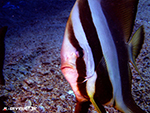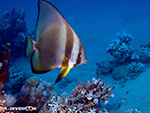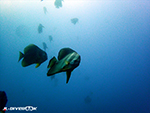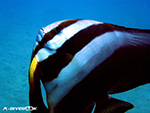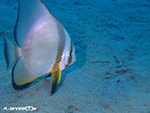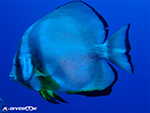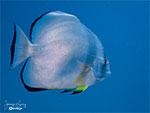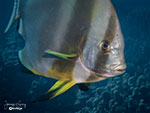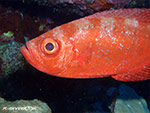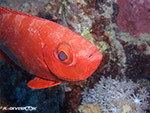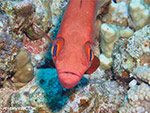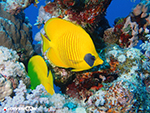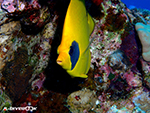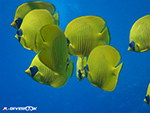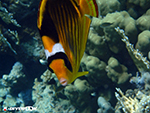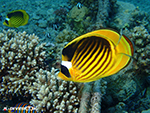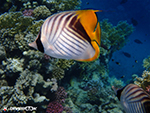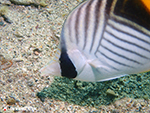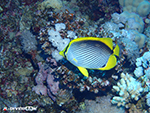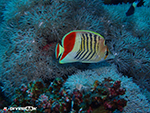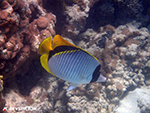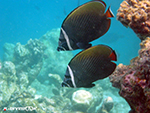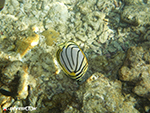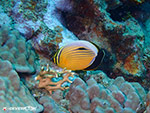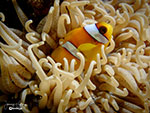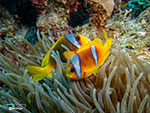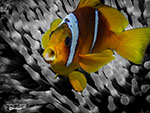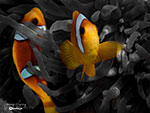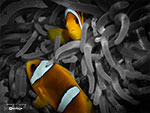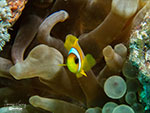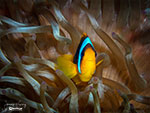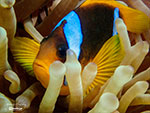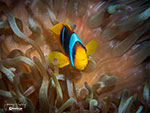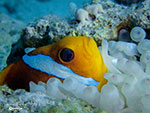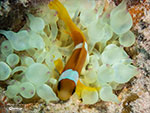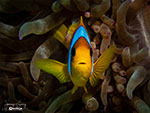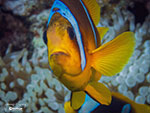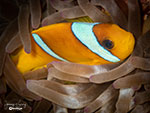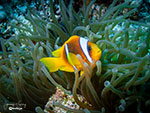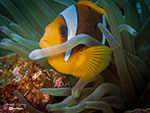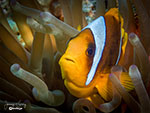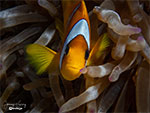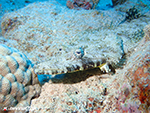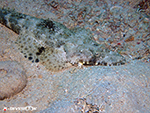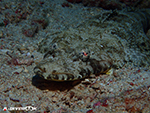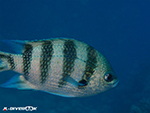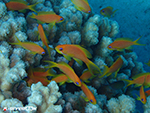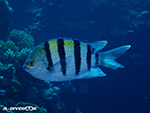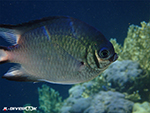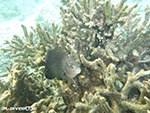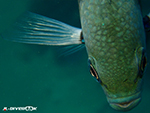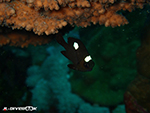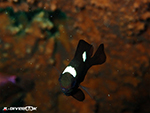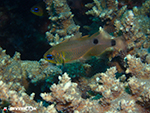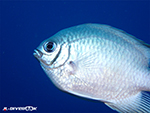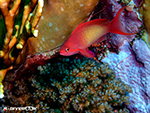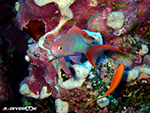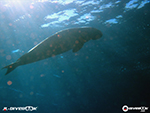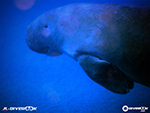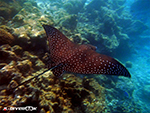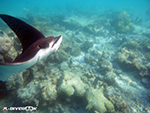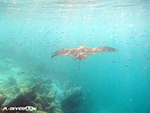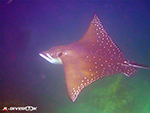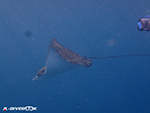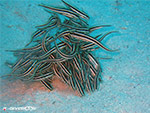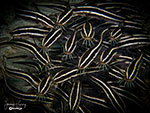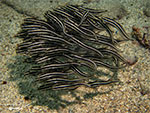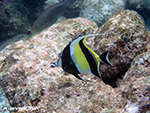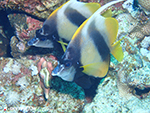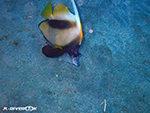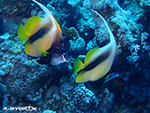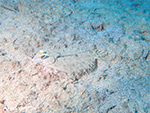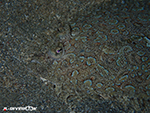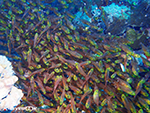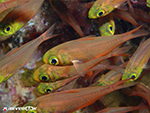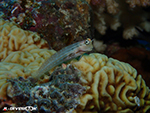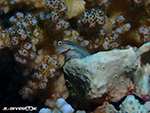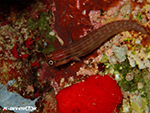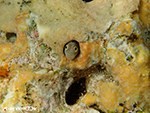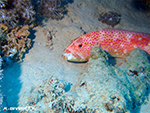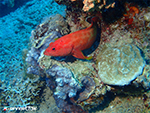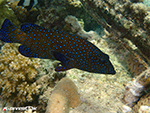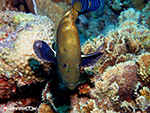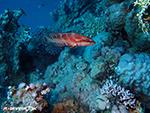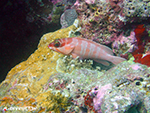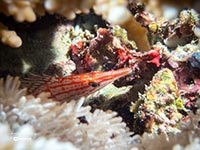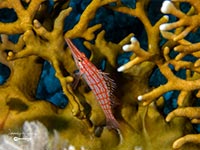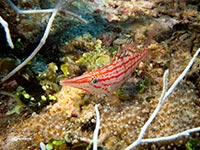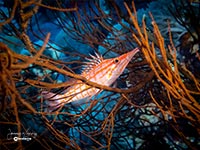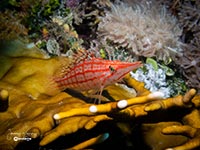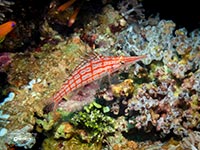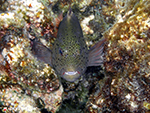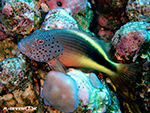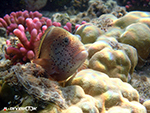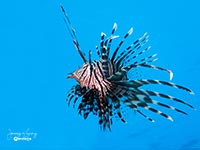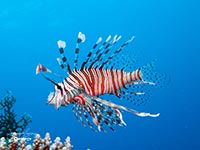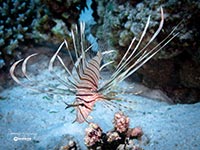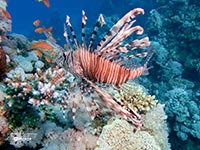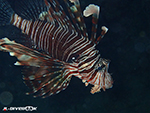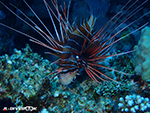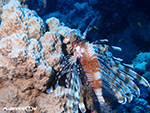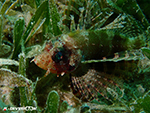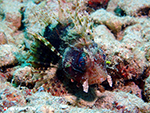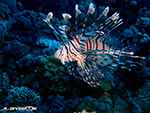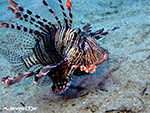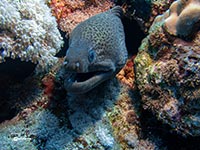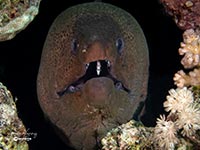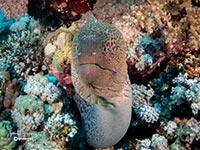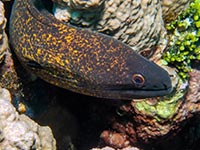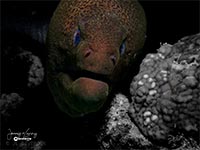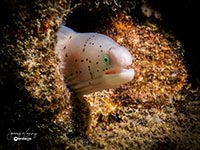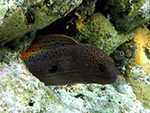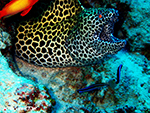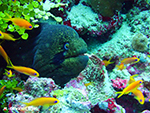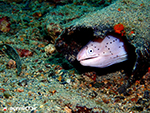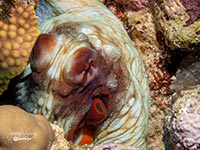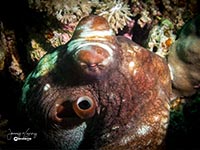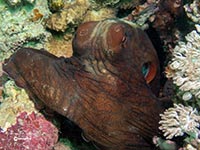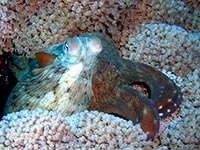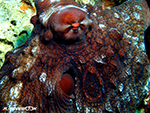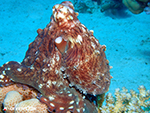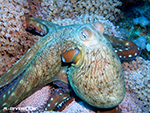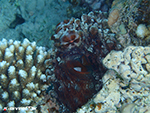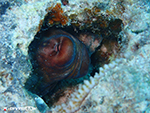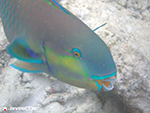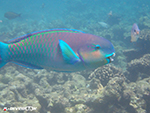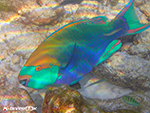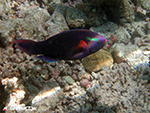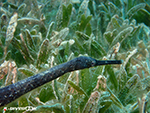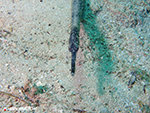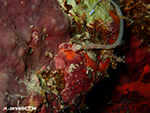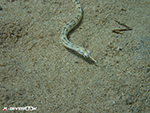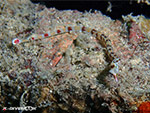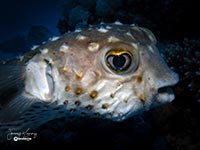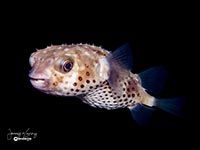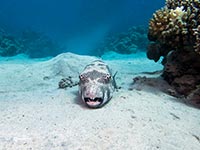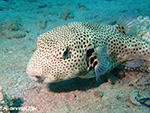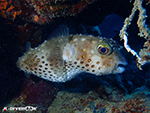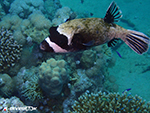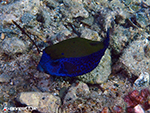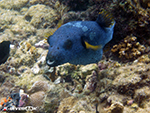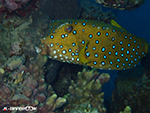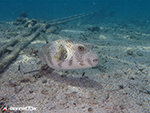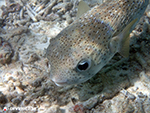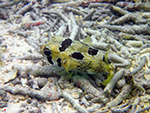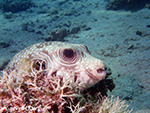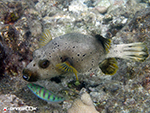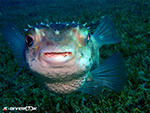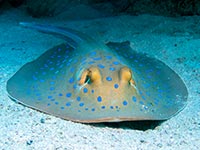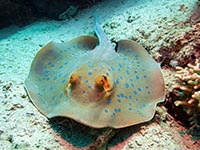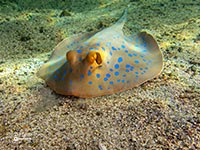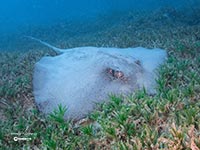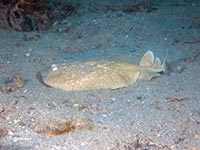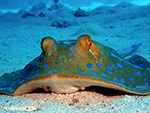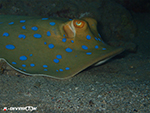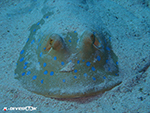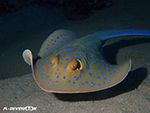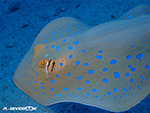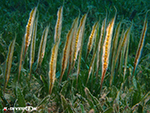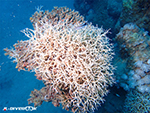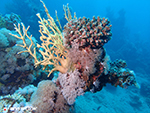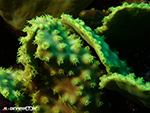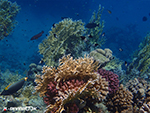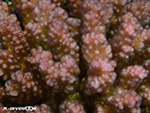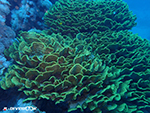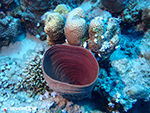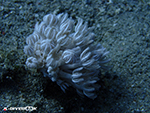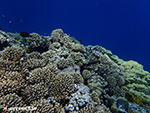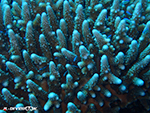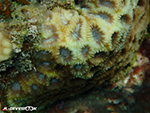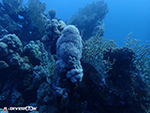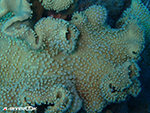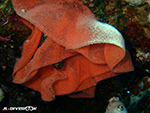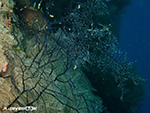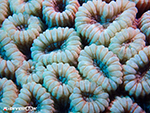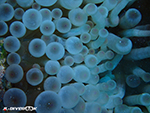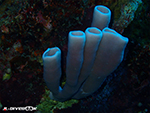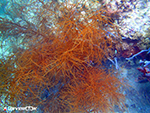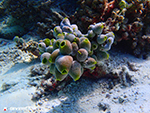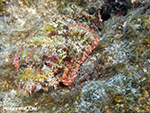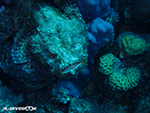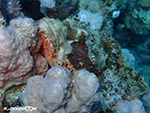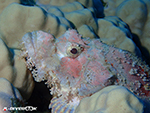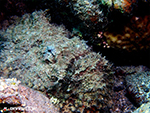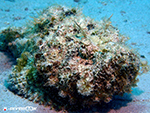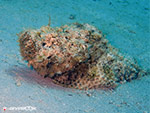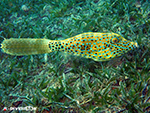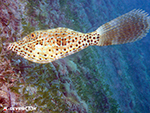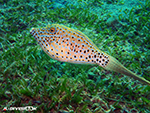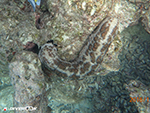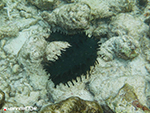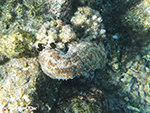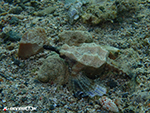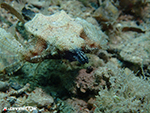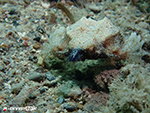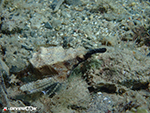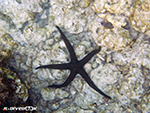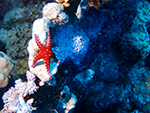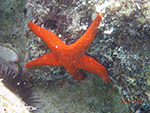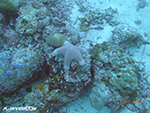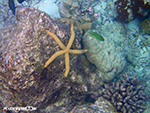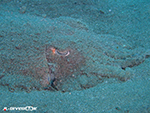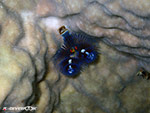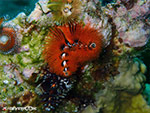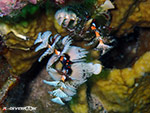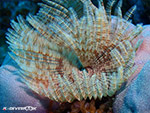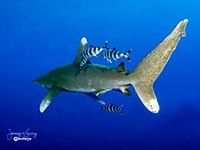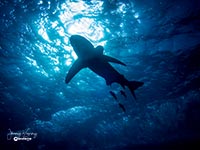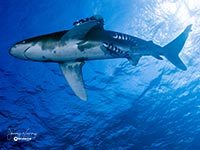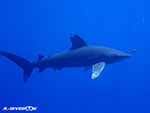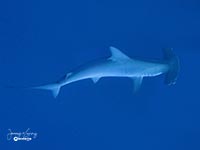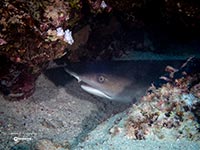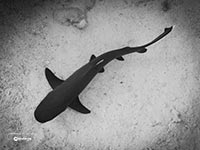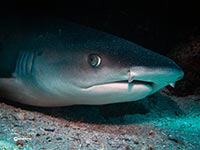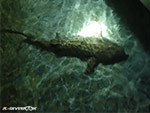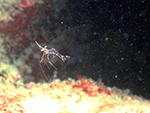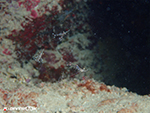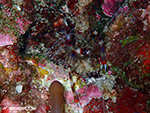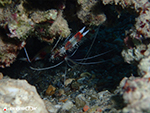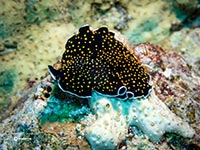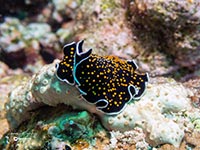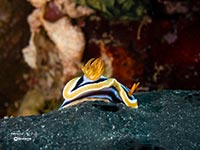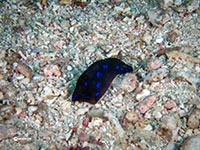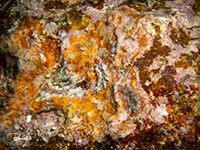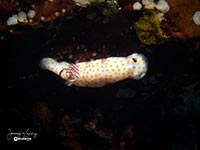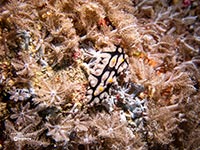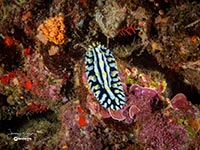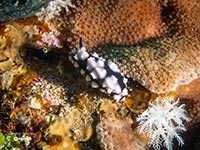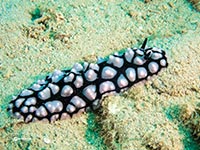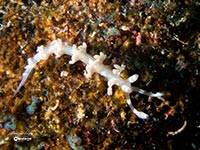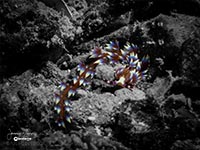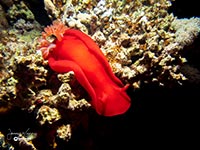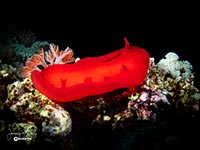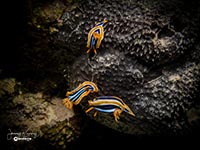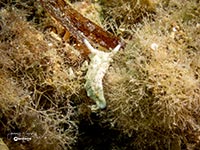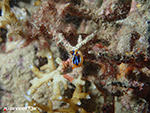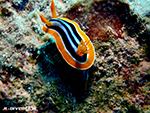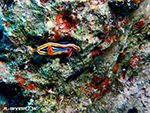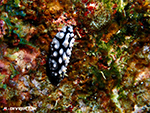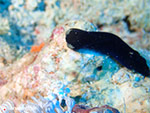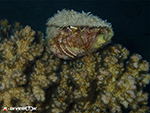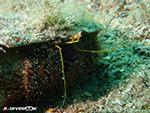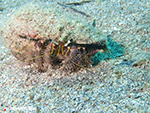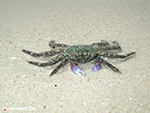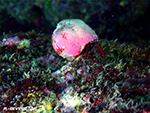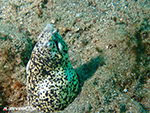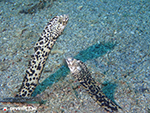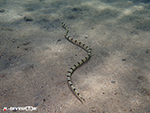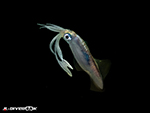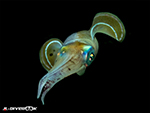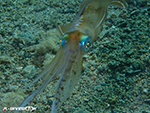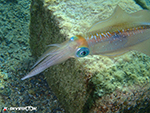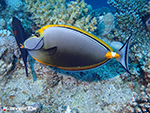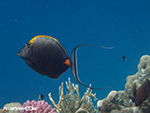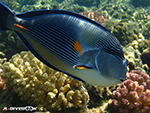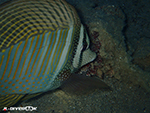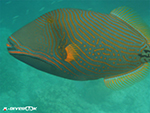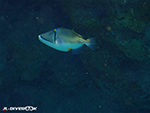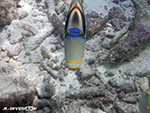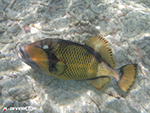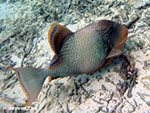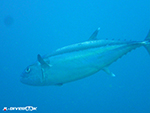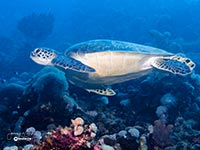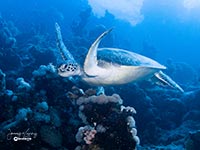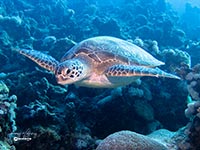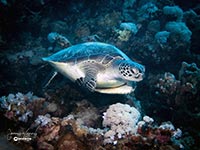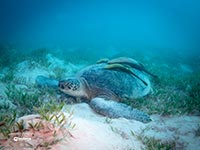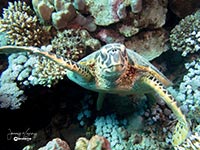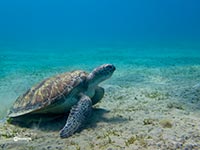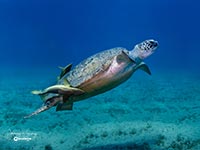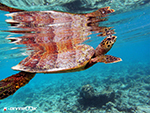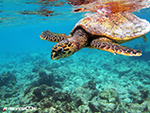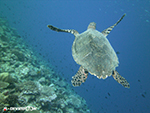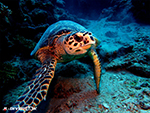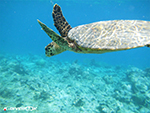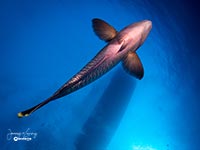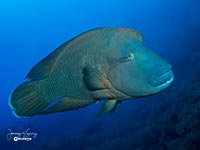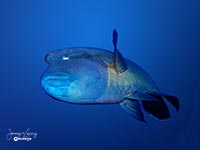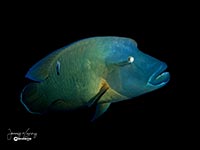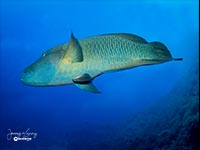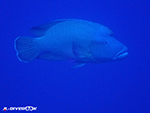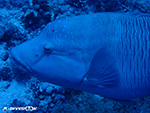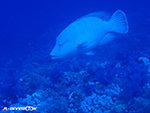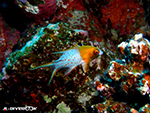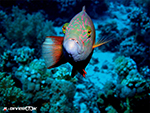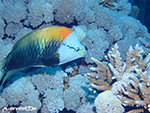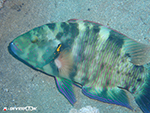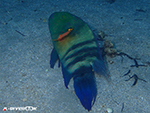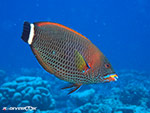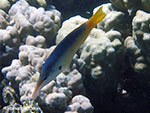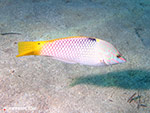
Marine angelfish are perciform fish of the family Pomacanthidae. They are found on shallow reefs in the tropical Atlantic, Indian, and mostly western Pacific Oceans. The family contains seven genera and about 86 species. With their bright colours and deep, laterally compressed bodies, marine angelfishes are some of the more conspicuous residents of the reef. They most closely resemble the butterflyfishes, a related family of similarly showy reef fish. Marine angelfish are distinguished from butterflyfish by the presence of strong preopercle spines (part of the gill covers) in the former.
The barracuda is a ray-finned fish known for its large size, fearsome appearance and ferocious behaviour. The barracuda is a saltwater fish. It is found in tropical and subtropical oceans worldwide ranging from the eastern border of the Atlantic Ocean to the Red Sea, on its western border the Caribbean Sea, and in tropical areas of the Pacific Ocean. Barracudas reside near the top of the water and near coral reefs and sea grasses.
Longfin batfish, longfin spadefish, or round faced batfish is a fish from the Indo-West Pacific. It occasionally makes its way into the aquarium trade. It grows to a size of 60 cm (24 in) in length. This fish is usually silver, grey or brownish. It has a blackish band through the eye and another band with the pectoral fin. They will change colour from silvery white with no bands, to brown with darker banding as you watch, and then fade back to silver again.
The common name of "bigeye" refers to the member species' unusually large eyes, suited to their carnivorous and nocturnal lifestyles. Priacanthidae are typically colored bright red, but some have patterns in silver, dusky brown, or black. Most species reach a maximum total length of about 30 cm (12 in), although in a few species lengths of over 50 cm (20 in) are known
The butterflyfish are a group of conspicuous tropical marine fish of the family Chaetodontidae; the bannerfish and coralfish are also included in this group. The approximately 129 species in 12 genera are found mostly on the reefs of the Atlantic, Indian, and Pacific Oceans. A number of species pairs occur in the Indian and Pacific Oceans, members of the huge genus Chaetodon.
Anemonefish or clownfish are fishes from the subfamily Amphiprioninae in the family Pomacentridae. Thirty species are recognized. In the wild, they all form symbiotic mutualisms with sea anemones. Depending on species, anemonefish are overall yellow, orange, or a reddish or blackish color, and many show white bars or patches. The largest can reach a length of 15–16 cm, while the smallest barely achieve 7–8 cm.
The Tentacled flathead or Crocodilefish is a member of the order Scorpaeniformes, an order which also includes the scorpionfishes and stonefishes. It is found in the Western Indian Ocean; the Red Sea. The species now also occurs in the Mediterranean, having invaded as a Lessepsian migrant through the Suez Canal.
Damselfish comprise the family Pomacentridae except those of the genera Amphiprion and Premnas, which are the anemonefish. They can grow up to 14 inches (36 cm) long. While most are marine, a few species inhabit the lower stretches of rivers in fresh water. Damselfish usually have bright colors.
The dugong is a medium-sized marine mammal. It is one of four living species of the order Sirenia, which also includes three species of manatees. The dugong is largely dependent on seagrass communities for subsistence and is thus restricted to the coastal habitats which support seagrass meadows, with the largest dugong concentrations typically occurring in wide, shallow, protected areas such as bays, mangrove channels, the waters of large inshore islands and inter-reefal waters.
The spotted eagle ray is a cartilaginous fish of the eagle ray family. As traditionally recognized, it is found globally in tropical regions, including the Atlantic, Pacific and Indian Oceans. Spotted eagle rays are most commonly seen alone, but occasionally swim in groups.
The eeltail catfish are a family (Plotosidae) of catfish whose tails are elongated in an eel-like fashion. These catfishes are native to the Indian Ocean and western Pacific from Japan to Australia and Fiji. These fish have eel-like bodies. Their tails are pointed or bluntly rounded. Most species have four pairs of barbels. The adipose fin is absent. The tail fin is formed by the joining of the second dorsal fin, the caudal fin, and the anal fin, forming a single, continuous fin.
The spotted eagle ray is a cartilaginous fish of the eagle ray family. As traditionally recognized, it is found globally in tropical regions, including the Atlantic, Pacific and Indian Oceans. Spotted eagle rays are most commonly seen alone, but occasionally swim in groups.
The leopard flounder or panther flounder is a flatfish found in the Pacific and Indian Oceans. - A flatfish is a member of the order Pleuronectiformes of ray-finned demersal fishes, also called the Heterosomata, sometimes classified as a suborder of Perciformes. In many species, both eyes lie on one side of the head, one or the other migrating through or around the head during development.
Sweepers are small, tropical marine (occasionally brackish) perciform fish of the family Pempheridae. Found in the western Atlantic Ocean and Indo-Pacific region, the family contains about 26 species in two genera. One species (Pempheris xanthoptera) is the target of subsistence fisheries in Japan, where the fish is much enjoyed for its taste. Sweepers are occasionally kept in marine aquaria.
Gobiidae is a family of bony fish in the order Gobiiformes, one of the largest fish families comprising more than 2,000 species in more than 200 genera, sometimes referred to as the "true gobies"
The common name grouper is usually given to fish in one of two large genera: Epinephelus and Mycteroperca. In addition, the species classified in the small genera Anyperidon, Cromileptes, Dermatolepis, Gracila, Saloptia, and Triso are also called groupers. Groupers are teleosts, typically having a stout body and a large mouth. They are not built for long-distance, fast swimming. They can be quite large, and lengths over a meter and weights up to 100 kg are not uncommon, though obviously in such a large group, species vary considerably.
The hawkfishes are strictly tropical, perciform marine fishes of the family Cirrhitidae associated with the coral reefs of the western and eastern Atlantic and Indo-Pacific. They share many morphological features with the scorpionfish of the family Scorpaenidae. Hawkfishes have large heads with thick, somewhat elongated bodies. Their dorsal fins are merged, with the first consisting of 10 connected spines.
The common lionfish grows up to 35 cm (14 in) in length. The dorsal fin has 13 long, strong spines and 9-11 soft rays, and the anal fin has three long spines and six or seven soft rays. The dorsal fin appears feathery and the pectoral fins are wing-like with separate broad, smooth rays. These fish vary in colour from reddish to tan or grey and have numerous thin, dark, vertical bars on their heads and bodies.
Moray eels, or Muraenidae, are a family of eels whose members are found worldwide. There are approximately 200 species in 15 genera which are almost exclusively marine. The dorsal fin extends from just behind the head along the back and joins seamlessly with the caudal and anal fins. Their eyes are rather small; morays rely mostly on their highly developed sense of smell, lying in wait to ambush prey.
Octopuses inhabit various regions of the ocean, including coral reefs, pelagic waters, and the seabed; some live in the intertidal zone and others at abyssal depths. Most species grow fast, mature early and are short-lived. During breeding, the male uses a specially adapted arm to deliver a bundle of sperm directly into the female's mantle cavity, after which he becomes senescent and dies. The female deposits fertilised eggs in a den and cares for them until they hatch, after which she also dies.
Parrotfishes are a group of marine species found in relatively shallow tropical and subtropical oceans around the world. With about 95 species, this group displays its largest species richness in the Indo-Pacific. They are found in coral reefs, rocky coasts, and seagrass beds, and can play a significant role in bioerosion.
Pipefish look like straight-bodied seahorses with tiny mouths. The name is derived from the peculiar form of the snout, which is like a long tube, ending in a narrow and small mouth which opens upwards and is toothless. The body and tail are long, thin, and snake-like. They each have a highly modified skeleton formed into armored plating. This dermal skeleton has several longitudinal ridges, so a vertical section through the body looks angular, not round or oval as in the majority of other fishes.
The family includes many familiar species which are variously called pufferfish, puffers, balloonfish, blowfish, blowies, bubblefish, globefish, swellfish, toadfish, toadies, honey toads, sugar toads, and sea squab. They are morphologically similar to the closely related porcupinefish, which have large external spines (unlike the thinner, hidden spines of the Tetraodontidae, which are only visible when the fish has puffed up). The scientific name refers to the four large teeth, fused into an upper and lower plate, which are used for crushing the shells of crustaceans and mollusks, their natural prey.
The bluespotted ribbontail ray is a species of stingray. Found from the intertidal zone to a depth of 30 m (100 ft), this species is common throughout the tropical Indian and western Pacific Oceans in nearshore, coral reef-associated habitats. It is a fairly small ray, not exceeding 35 cm (14 in) in width, with a mostly smooth, oval pectoral fin disc, large protruding eyes, and a relatively short and thick tail with a deep fin fold underneath.
razorfish, jointed razorfish or coral shrimpfish, is a member of the family Centriscidae of the order Syngnathiformes. This unique fish adopts a head-down tail-up position as an adaptation for hiding among sea urchin spines. The razorfish is found in coastal waters in the Indo-West Pacific. Its natural habitat includes beds of sea grass and coral reefs, where sea urchins are found.
A reef is a bar of rock, sand, coral or similar material, lying beneath the surface of water. Many reefs result from natural, abiotic processes—deposition of sand, wave erosion planing down rock outcrops, etc.—but the best known reefs are the coral reefs of tropical waters developed through biotic processes dominated by corals and coralline algae.
Scorpaenidae (also known as the scorpionfish) are a family of mostly marine fish that includes many of the world's most venomous species. As the name suggests, scorpionfish have a type of 'sting' in the form of sharp spines coated with venomous mucus. The family is a large one, with hundreds of members. They are widespread in tropical and temperate seas, but mostly found in the Indo-Pacific. They should not be confused with the cabezones, of the genus Scorpaenichthys, which belong to a separate, though related, family, Cottidae.
Aluterus scriptus, commonly known as scrawled filefish, broomtail filefish or scribbled leatherjacket, is a marine fish belonging to the family Monacanthidae. Scrawled (scribbled) filefish is a medium size fish which can grow up to 110 cm (3.6 ft) in length.[3] The body shape looks like an elongated oval, strongly compressed. Its background body coloration is olive-brown or grey depending on its surrounding environment, irregular blue lines and spots are distributed on the body mixed with some black spots mainly on the head.
Most sea cucumbers, as their name suggests, have a soft and cylindrical body, more or less lengthened, rounded off and occasionally fat in the extremities, and generally without solid appendages. Their shape ranges from almost spherical for "sea apples" to serpent-like for Apodida or the classic sausage-shape, while others resemble caterpillars. The mouth is surrounded by tentacles, which can be pulled back inside the animal. Holothurians measure generally between 10 and 30 centimetres long, with extremes of some millimetres for Rhabdomolgus ruber and up to more than 3 metres for Synapta maculata.
The seamoths make up a family of fishes, the Pegasidae, within the order Gasterosteiformes. They are named for Pegasus, a creature from Greek mythology. Seamoths are notable for their unusual appearance, including flattened bodies, the presence of large, wing-like, pectoral fins, a long snout, and a body encased in thick, bony plates. They are found primarily in coastal tropical waters of the Indo-Pacific.
Starfish or sea stars are star-shaped echinoderms belonging to the class Asteroidea. Common usage frequently finds these names being also applied to ophiuroids, which are correctly referred to as brittle stars or basket stars. About 1,500 species of starfish occur on the seabed in all the world's oceans, from the tropics to frigid polar waters. They are found from the intertidal zone down to abyssal depths, 6,000 m (20,000 ft) below the surface.
The Serpulidae are a family of sessile, tube-building annelid worms in the class Polychaeta. The members of this family differ from other sabellid tube worms in that they have a specialized operculum that blocks the entrance of their tubes when they withdraw into the tubes. In addition, serpulids secrete tubes of calcium carbonate. Serpulids are the most important biomineralizers among annelids. About 300 species in the family Serpulidae are known, all but one of which live in saline waters.
Sabellidae (feather duster worms) are a family of marine polychaete tube worms characterized by protruding feathery branchiae.
There are more than 465 known species of sharks living in our oceans today. Sharks are an apex predator at or near the top of their marine food chains, and they regulate the populations of species below them. Under this broader definition, the earliest known sharks date back to more than 420 million years ago
The term shrimp is used to refer to some decapod crustaceans, although the exact animals covered can vary. Used broadly, shrimp may cover any of the groups with elongated bodies and a primarily swimming mode of locomotion – most commonly Caridea and Dendrobranchiata. In some fields, however, the term is used more narrowly and may be restricted to Caridea, to smaller species of either group or to only the marine species.
Chromodoris is a genus of very colourful sea slugs or dorid nudibranchs, marine gastropod molluscs, and the type genus of in the family Chromodorididae. Within the genus Chromodoris, there are currently 101 classified species.
Crustaceans form a large, diverse arthropod taxon which includes such familiar animals as crabs, lobsters, crayfish, shrimps, prawns, krill, woodlice, and barnacles
Snake eels are also burrowing eels, they are named for their physical appearance, they have long, cylindrical snakelike bodies. This family is found worldwide in tropical to warm temperate waters. They inhabit a wide range of habitats, from coastal shallows and even rivers, to depths of above 800 m (2,600 ft).Most species are bottom dwellers, hiding in mud or sand to capture their prey of crustaceans and small fish, but some are pelagic. These species range from 5 cm (2.0 in) to 2.3 m (7.5 ft) or more in length.
Squid are cephalopods in the superorder Decapodiformes with elongated bodies, large eyes, eight arms and two tentacles. Like all other cephalopods, squid have a distinct head, bilateral symmetry, and a mantle. They are mainly soft-bodied, like octopuses, but have a small internal skeleton in the form of a rod-like gladius or pen, made of chitin. Squid diverged from other cephalopods during the Jurassic and occupy a similar role to teleost fish as open water predators of similar size and behaviour.
Acanthuridae are the family of surgeonfishes, tangs, and unicornfishes. The family includes about 86 extant species of marine fish living in tropical seas, usually around coral reefs. Many of the species are brightly colored and popular in aquaria. The distinctive characteristic of the family is that they have scalpel-like spines, one or more on either side of the peduncle of the tail. The spines are dangerously sharp and may seriously injure anyone who carelessly handles such a fish. The dorsal, anal, and caudal fins are large, extending for most of the length of the body. The mouths are small and have a single row of teeth adapted to grazing on algae.
Triggerfishes are about 40 species of often brightly colored fish of the family Balistidae. Often marked by lines and spots, they inhabit tropical and subtropical oceans throughout the world, with the greatest species richness in the Indo-Pacific. Most are found in relatively shallow, coastal habitats, especially at coral reefs, but a few, such as the oceanic triggerfish (Canthidermis maculata), are pelagic. While several species from this family are popular in the marine aquarium trade, they are often notoriously ill-tempered.
A tuna (also called tunny) is a saltwater fish that belongs to the tribe Thunnini, a subgrouping of the Scombridae (mackerel) family. The Thunnini comprise 15 species across five genera, the sizes of which vary greatly, ranging from the bullet tuna (max. length: 50 cm (1.6 ft), weight: 1.8 kg (4 lb)) up to the Atlantic bluefin tuna (max. length: 4.6 m (15 ft), weight: 684 kg (1,508 lb)). The bluefin averages 2 m (6.6 ft), and is believed to live up to 50 years.
The green sea turtle (Chelonia mydas), also known as the green turtle, black (sea) turtle or Pacific green turtle, is a large sea turtle of the family Cheloniidae. It is the only species in the genus Chelonia. Its range extends throughout tropical and subtropical seas around the world, with two distinct populations in the Atlantic and Pacific Oceans, but it is also found in the Indian Ocean. The common name comes from the usually green fat found beneath its carapace[citation needed]; these turtles' shells are olive to black.
The wrasses are a family, Labridae, of marine fish, many of which are brightly colored. The family is large and diverse, with over 600 species in 81 genera, which are divided into 9 subgroups or tribes. They are typically small fish, most of them less than 20 cm (7.9 in) long, although the largest, the humphead wrasse, can measure up to 2.5 m (8.2 ft). They are efficient carnivores, feeding on a wide range of small invertebrates. Many smaller wrasses follow the feeding trails of larger fish, picking up invertebrates disturbed by their passing


